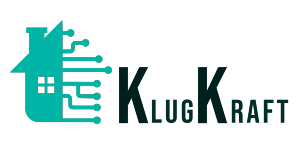“Open office automation” typically refers to the application of automation technology within open office environments, which are characterized by shared workspaces, collaborative areas, and minimal physical barriers between employees. Here’s an overview of how automation can be applied in open office settings:
- Smart Lighting and Climate Control: Automation systems can regulate lighting and temperature settings based on occupancy levels and time of day. Motion sensors and occupancy sensors can detect when individuals enter or leave an area, adjusting lighting levels and HVAC settings accordingly to optimize energy usage and comfort.
- Occupancy Management: Open office automation systems can provide real-time data on workspace utilization, helping facility managers optimize space allocation and layout. Sensors and occupancy tracking systems can monitor desk and meeting room occupancy, enabling efficient use of available resources and facilitating hot-desking arrangements.
- Collaboration Tools and Communication Systems: Automation can enhance communication and collaboration in open office environments through the integration of smart communication tools and systems. This includes video conferencing platforms, digital whiteboards, instant messaging apps, and project management software, which can be integrated with room booking systems and calendar apps for seamless collaboration.
- Workspace Booking and Reservation: Automation systems can streamline the process of booking and reserving workspaces, meeting rooms, and shared resources within open office environments. Employees can use mobile apps or online platforms to check availability, reserve spaces, and manage bookings, reducing scheduling conflicts and improving productivity.
- Task and Workflow Automation: Automation technology can automate repetitive tasks and workflows, such as data entry, document processing, and administrative tasks, freeing up employees to focus on more value-added activities. Workflow automation tools and robotic process automation (RPA) software can streamline workflows, reduce errors, and improve efficiency in open office environments.
- Employee Wellness and Productivity: Automation technology can support employee wellness and productivity initiatives by providing insights into workspace conditions and employee behavior. Environmental sensors can monitor air quality, noise levels, and lighting conditions, while wellness apps and activity trackers can promote healthy habits and work-life balance among employees.
- Security and Access Control: Automation systems can enhance security and access control in open office environments by integrating with security cameras, access control systems, and alarm systems. Smart locks and biometric authentication systems can restrict access to sensitive areas, while surveillance cameras and motion sensors can deter unauthorized access and monitor for security threats.
Overall, open office automation aims to create more efficient, flexible, and collaborative work environments by leveraging smart technology and automation solutions. By integrating automation into various aspects of open office management, businesses can improve productivity, reduce costs, enhance employee satisfaction, and adapt to changing workplace trends and preferences.

